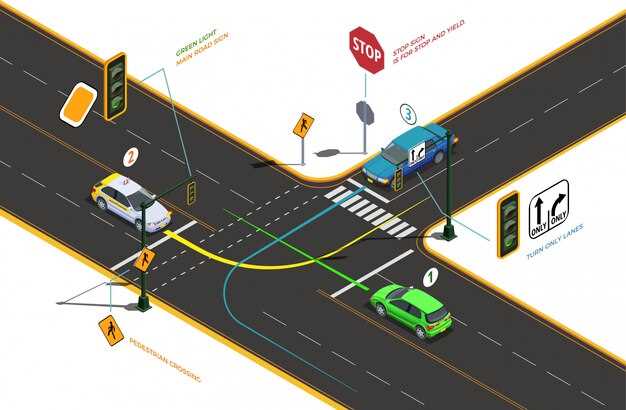
The art of racing extends far beyond mere speed; it emphasizes precise control and strategic decision-making. One of the most critical elements in this equation is the concept of braking zones. These areas dictate when and how a driver must transition from acceleration to deceleration, ultimately influencing lap times and overall performance. Understanding the intricacies of braking zones is essential for any racer looking to improve their skills.
Effective strategy in navigating braking zones requires a keen sense of timing and spatial awareness. Drivers must identify key marker points on the track, which serve as visual cues for when to initiate braking. These markers can be signs, curb placements, or even specific track features. A well-executed strategy not only enhances a driver’s ability to slow down efficiently but also positions them optimally for the next turn, paving the way for faster overall lap times.
In this article, we will explore various techniques and tips that can elevate your understanding of braking zones. By analyzing different tracks and their unique characteristics, we aim to equip you with the knowledge needed to develop a tailored strategy for braking that suits your racing style. Whether you are a novice or an experienced racer, mastering the art of braking can unlock new levels of performance and consistency on the track.
Identifying Optimal Braking Points for Various Track Types

Understanding the specific characteristics of different track types is crucial for determining the optimal braking points. Each type of track presents unique challenges that influence when and how a driver should apply the brakes.
1. Circuit Tracks
Circuit tracks often feature a mix of tight turns and long straights, making them diverse environments for braking strategies.
- Heavy braking zones: Identify sections where significant speed reduction is necessary, typically before tight corners.
- Late Apex Turns: For corners with a late apex, aim to brake hard initially but then ease off as you approach the corner apex.
- Braking markers: Use visible trackside markers, such as signs or cones, to establish reference points for braking.
2. Street Circuits
Street circuits are characterized by their lack of run-off areas and uneven surfaces, requiring additional caution when braking.
- Variable surfaces: Account for the grip levels that vary significantly due to debris or changes in road conditions.
- Brake application: Adjust braking intensity based on corner radius; tighter turns typically require more aggressive braking.
- Visual cues: Use landmarks like buildings or road markings to gauge braking distances accurately.
3. Natural Terrain Tracks
Natural terrain tracks often feature elevation changes and challenging layouts that require strategic braking point identification.
- Gradient considerations: Be aware of uphill sections, where extra braking will be necessary, and downhill areas, where less braking might be needed.
- Blind corners: In some cases, advanced practice runs or simulation tools can help determine braking points in blind corners.
- Segmented braking zones: Break down complex turns into segments; identify optimal braking zones for each segment to maintain speed.
4. Oval Tracks
On oval tracks, maintaining speed through banking can drastically affect braking dynamics.
- Straightaways: Braking often occurs at the end of straight segments before entering turns; establish consistent braking points here.
- Turn entry speed: Monitor corner entry speed; less braking usually occurs due to the oval’s driving style, focusing on momentum.
- Track conditions: Consider tire degradation and fuel load when identifying braking points, as both can affect performance.
Effective braking point identification across these track types enhances lap times and overall race performance. Continuous practice and data analysis are key to refining these strategies for any racing driver.
Utilizing Visual and Cones Markers to Enhance Braking Precision

Effective braking is crucial for achieving optimal lap times in racing. One of the most reliable ways to improve braking performance is through the use of visual and cone markers strategically placed along the track. These markers serve as essential reference points for drivers, helping them to determine the exact moment to initiate braking.
Visual markers can include track-side signs, banners, and natural features such as trees or barriers. These elements create a mental map for drivers, allowing them to establish a consistent braking strategy. By focusing on identifiable points along the track, racers can reduce guesswork and enhance their ability to hit the brakes at the right time.
Additionally, cone markers are often utilized in various racing scenarios, particularly during practice sessions. Cone placement is usually tailored to simulate braking zones, enabling drivers to practice their braking techniques and refine their approach to each corner. By marking specific distances–such as 100, 50, or 30 meters before the turn–drivers can develop precise habits, making their braking strategy more effective.
Incorporating both visual and cone markers into training routines can lead to significant improvements in braking accuracy. Drivers who consistently rely on these markers tend to experience less variance in their braking points, resulting in enhanced control and reduced lap times. Ultimately, utilizing visual and cone markers is an invaluable approach for any racer looking to elevate their performance on the track.
Adapting Braking Techniques Based on Weather and Tire Conditions
Understanding how weather and tire conditions affect braking points is crucial for optimizing race strategy. Different environmental factors can significantly change the grip level and responsiveness of tires, necessitating adjustments in braking techniques.
Wet conditions often reduce traction, making it essential for drivers to modify their approach. In these scenarios, it’s advisable to increase braking distance and apply pressure gently to avoid locking the tires. Instead of relying on the typical hard braking strategy, drivers should aim for a smoother deceleration, allowing tires to maintain their grip over the slick surface.
When racing in dry conditions, the focus shifts back to maximizing tire performance. Here, drivers can exploit the full capabilities of their tires by braking more aggressively and using precise markers. Establishing clear braking points based on track layout and grip levels can enhance lap times significantly. The strategy might involve understanding how tire wear affects traction late in the race, prompting a gradual adjustment in braking zones as the tires begin to degrade.
In addition, different tire compounds will react uniquely under varying conditions. For example, soft tires may offer peak performance in dry weather but could overheat quickly, requiring the driver to adapt their braking strategy accordingly. In contrast, harder compounds might provide greater durability but less immediate grip. Thus, recognizing how tire characteristics interact with weather conditions is vital for determining the best braking points during a race.
Ultimately, successful racing demands that drivers continually assess and adapt their braking techniques based on current weather and tire conditions. A well-thought-out strategy can mean the difference between maintaining control and losing precious time on the track.




